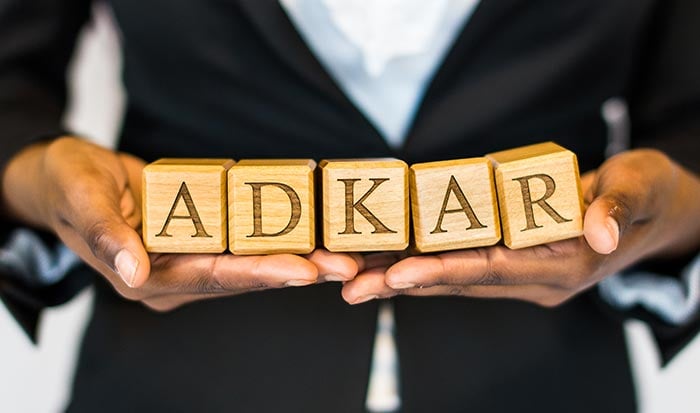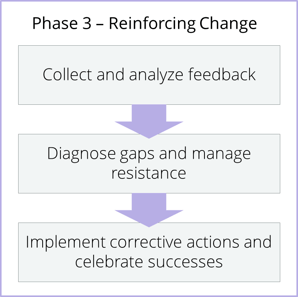How to Reinforce Change by Celebrating Successes

2 Mins
Updated: June 26, 2024
Published: July 1, 2015

 Reinforcement is more than checking a box that a change was done. There are three clear steps to reinforcing a change:
Reinforcement is more than checking a box that a change was done. There are three clear steps to reinforcing a change:
- Collecting and analyzing employee feedback
- Diagnosing gaps and managing resistance to change
- Implementing corrective actions and celebrating success
The third stage, implementing corrective actions and celebrating successes, has three steps:
- Implement corrective action
- Celebrate successes and reinforce the change
- Transfer ownership of the change to operational managers and conduct after-action reviews

1. Implement Corrective Action
In this step, you are implementing the corrective action plans developed in the previous stage. These corrective actions will be completed by one or both of the key players in the change management process: supervisors and your primary sponsor. Your role is to enable them to complete these corrective actions successfully. Remember: as a change leader, you are the sponsor's coach.
2. Celebrate Successes and Reinforce the Change
In this step, you will be identifying and celebrating successes on the project. Use these celebrations and public acknowledgement to reinforce the change. Constantly seek evidence of major milestones and identify early successes even if small. Here are some hints to create successful celebrations:
- Organize ways to recognize groups and individuals
- make it public
- Use normal meetings as an avenue for recognition of achievement
- Ensure key sponsors and stakeholders are aware of these achievements
- Involve managers in the chain of command to award these recognitions
- Provide supervisors with ways to recognize their employees
For low-cost celebration ideas, get your team together and brainstorm. You will be surprised at the low cost, creative ideas your team comes up with and how well those ideas are received.
Celebrating successes not only increases morale but it builds support among those that may need to "see it to believe it."
3. Transfer Ownership of the Change
At some point in the project, the change management team will dissolve and the operational managers will take over. For small projects this is a minor transition. For large projects, the steering committee is involved and the transition requires careful management.
Discussions and interviews with the primary sponsor and the steering committee should be held to:
- Inform them that plans are being developed to transfer ownership for the change to operational managers
- Determine what outstanding issues need to be addressed prior to the change management team being dissolved
- Work out an acceptable time table for the transition to occur
The primary sponsor or steering committee will ultimately make the transition decision based on how well the project is doing and what further responsibilities they envision for the change management team.
The goal of after-action reviews
An after-action review is a post-project analysis of what worked and what did not. This analysis results in lessons-learned for the next project. Learn from your mistakes and from your successes. Begin to build change management competency into the organization.
Keep in mind that the after-action review has several sources of information besides the change management team, including:
- Employees impacted by the change
- Customers and suppliers in the process
- Sponsors, stakeholders and managers in the organization
Input from each of these groups should be considered when evaluating your overall performance. The outcome of this activity should be documented lessons-learned and changes to the change management process for the next project.
With this final step of Phase Three of the Prosci 3-Phase Process, you are officially ready to move on to the next change.


